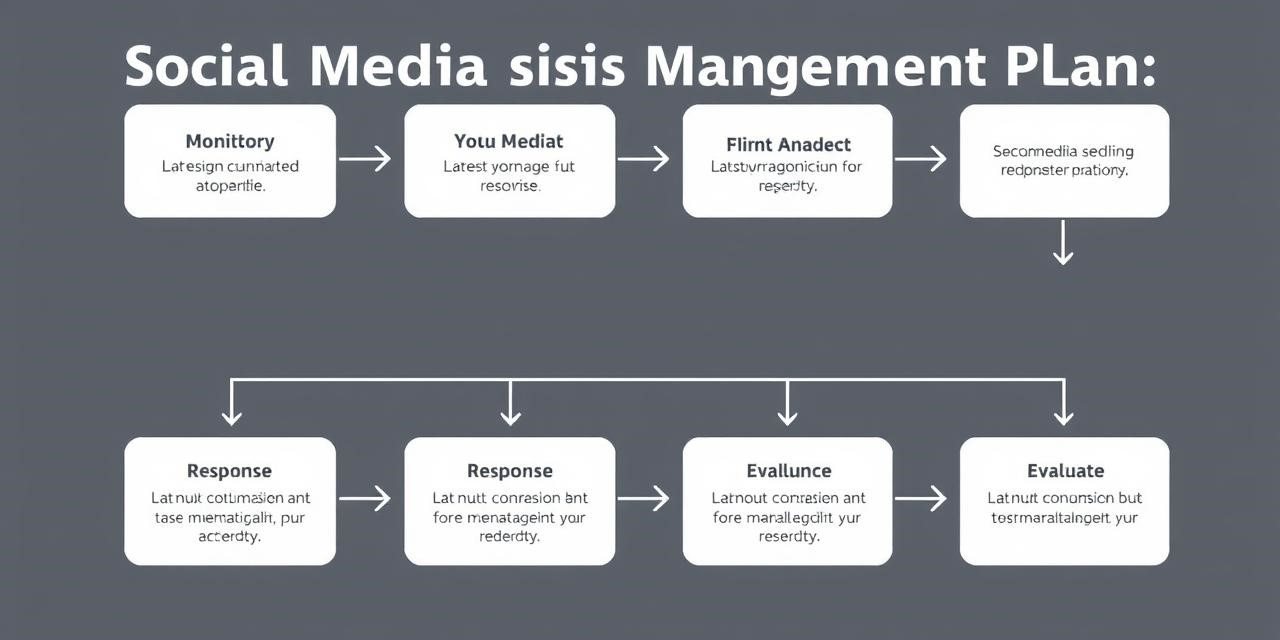Let’s be real: your brand’s reputation lives and dies on social media these days. One clumsy tweet, a tone-deaf reply, or a customer complaint gone viral… boom! You’ve got a crisis on your hands. It can hurt your bottom line and make customers run for the hills. But don’t freak out! With a solid social media crisis management plan, you can weather any storm and come out even stronger.
Ever seen a brand completely bungle a social media situation? Think about that time a major airline gave a terrible response to a customer. It blew up on Twitter and Facebook! Their stock price took a hit, and they had to issue a public apology. The moral of the story? Hoping a crisis won’t happen isn’t a plan. You need to be proactive.
Why You Need a Social Media Crisis Management Plan
A crisis management plan isn’t just a “nice-to-have.” It’s essential. It gives you a roadmap for:
- Lightning-fast response: Shut things down before they get out of control.
- Consistent messaging: Make sure everyone’s on the same page, saying the right things.
- Reputation defense: Protect your brand’s image and keep customers happy.
- Controlled communication: Take charge of the story and stop rumors in their tracks.

Building Your Crisis Management Fortress: Key Components
Okay, so how do you build this “fortress”? Here’s the breakdown:
1. Assemble Your Crisis Response Team
Who’s in charge when things go south? You need a team! Marketing, PR, customer service, legal… maybe even the CEO. Nail down everyone’s role before a crisis hits.
2. Establish Communication Protocols
How will your team talk to each other during a crisis? Email? Slack? A Bat-Signal? Figure out the channels and make sure everyone knows the chain of command. Speed is key!
3. Identify Potential Crisis Scenarios
Brainstorm time! What could possibly go wrong? Product recalls? Bad reviews? A data breach? An employee saying something stupid? Natural disaster? For each scenario, sketch out how you’d respond. This is all about being prepared.
4. Implement Social Listening Tools
Think of social listening as your early warning system. Tools like Brandwatch or Mention can monitor what people are saying about your brand, your industry, and even your competitors. Catch those little rumblings before they turn into earthquakes. Track your brand name, keywords, and relevant hashtags.
5. Develop Pre-Approved Messaging Templates
You can’t predict everything, but you can prep for the usual suspects. Create templates for holding statements, FAQs, and key messages. Having these ready to go will save you precious time when the clock is ticking.
6. Define Escalation Procedures
When does a problem go from a minor annoyance to a full-blown emergency? Lay out the criteria for escalating issues to different levels of your organization. A single complaint? Customer service handles it. A widespread product recall? Get the executives involved.
7. Practice and Refine Your Plan
Don’t wait for a real crisis to test your plan! Run simulations and drills. See what works, what doesn’t, and tweak your plan accordingly. Crisis management is an ongoing process, not a one-time thing.
Navigating the Storm: Responding to a Social Media Crisis
Okay, the unthinkable happened. A crisis is raging. Now what? Here’s how to weather the storm:
1. Acknowledge the Issue Promptly
Don’t bury your head in the sand! Acknowledge the problem publicly. Let people know you’re aware and working on a solution. Silence is not golden here. It looks like you don’t care or, worse, that you’re guilty.
2. Take Responsibility (If Necessary)
Did your company screw up? Own it. Apologize sincerely and explain how you’re going to fix things. Transparency is everything when it comes to rebuilding trust.
3. Communicate Clearly and Empathetically
Ditch the jargon! Talk to people like they’re human beings. Show some empathy and let them know you understand their concerns.
4. Engage with Your Audience
Answer comments and questions quickly and professionally. Address concerns and provide accurate information. Show people you’re listening.
5. Direct Conversations Offline (When Appropriate)
Some issues are too complex or sensitive to handle publicly. Offer to take the conversation offline. Provide contact info for customer service or someone who can help directly. A personal touch can go a long way.
6. Monitor the Situation Continuously
Keep an eye on social media throughout the crisis. Track the overall sentiment and see what people are saying. This will help you adjust your strategy as needed.
After the Storm: Post-Crisis Evaluation
The dust has settled. Now it’s time to figure out what happened and how to do better next time. Ask yourself:
- How fast did we react?
- Was our communication effective?
- Did we keep the situation from spiraling out of control?
- What did we learn?
Use this info to refine your crisis management plan and get ready for the next challenge. Share your findings with the team and make changes to your protocols.
Turning Crisis Into Opportunity
No one wants a social media crisis, but it can be a chance to show what your brand is really made of. By responding quickly, honestly, and with empathy, you can rebuild trust and strengthen relationships with your customers. Be prepared, be proactive, and be genuine.
Don’t wait for disaster to strike. Start building your social media crisis management plan today. Your brand’s reputation is on the line.


